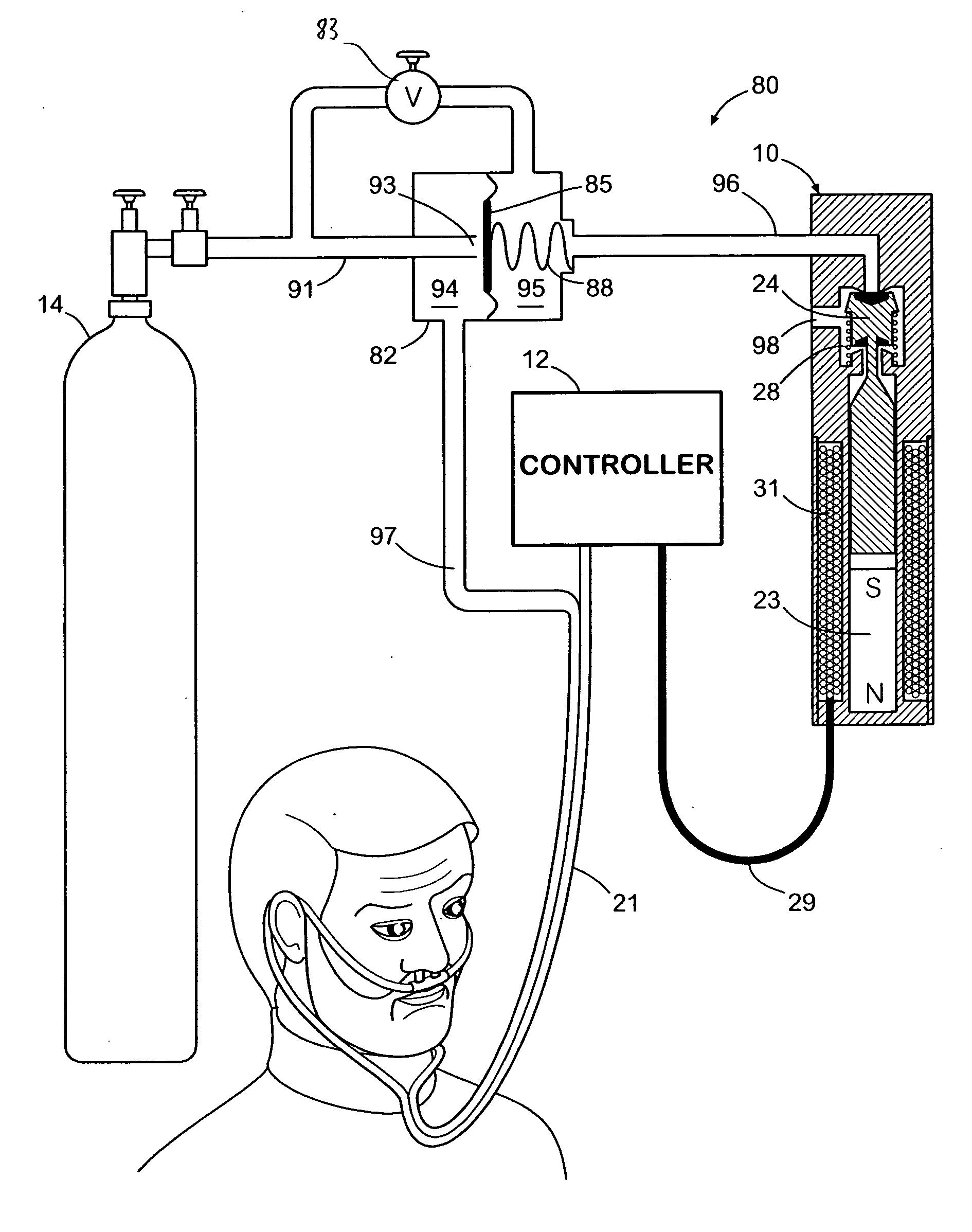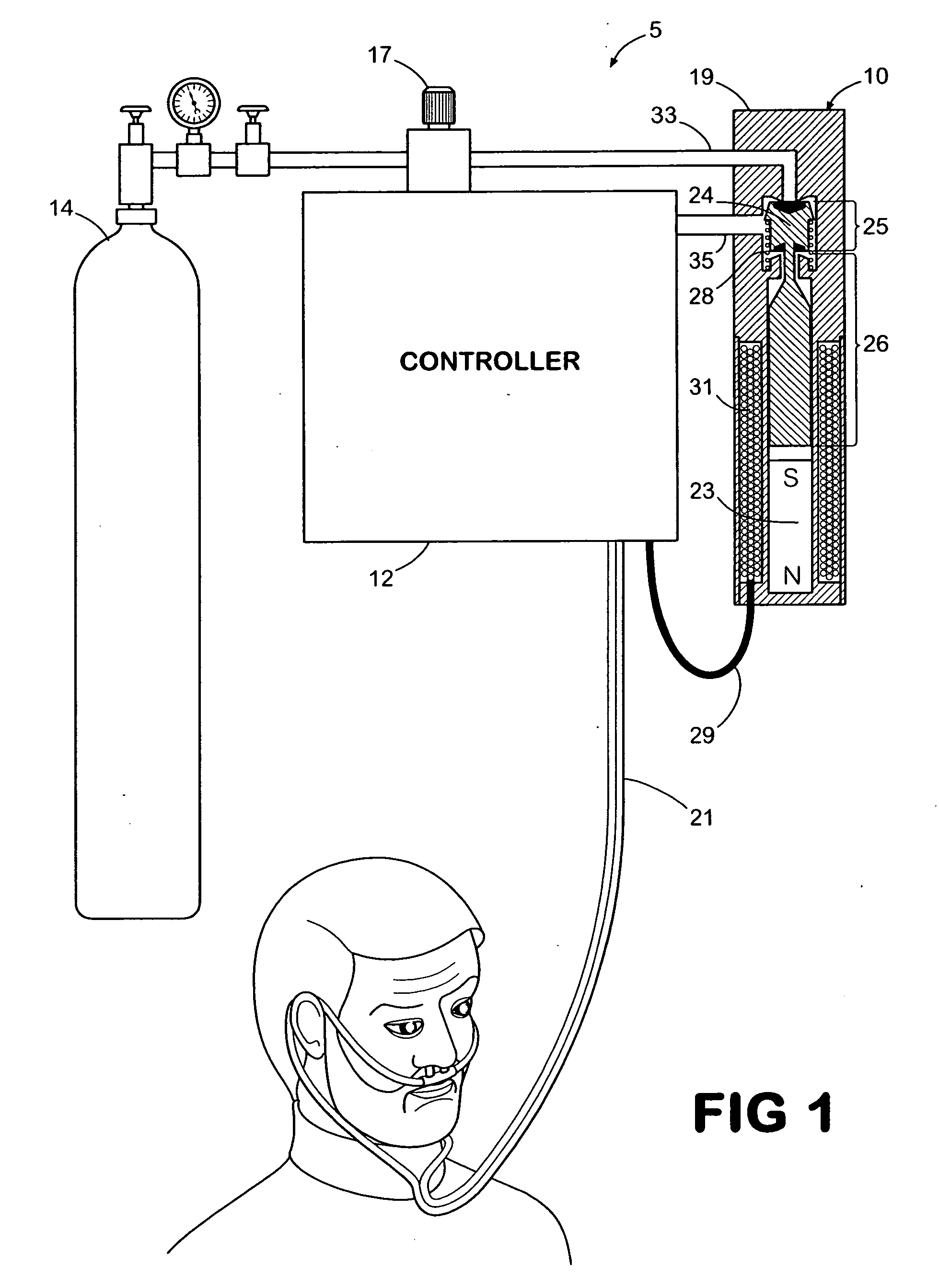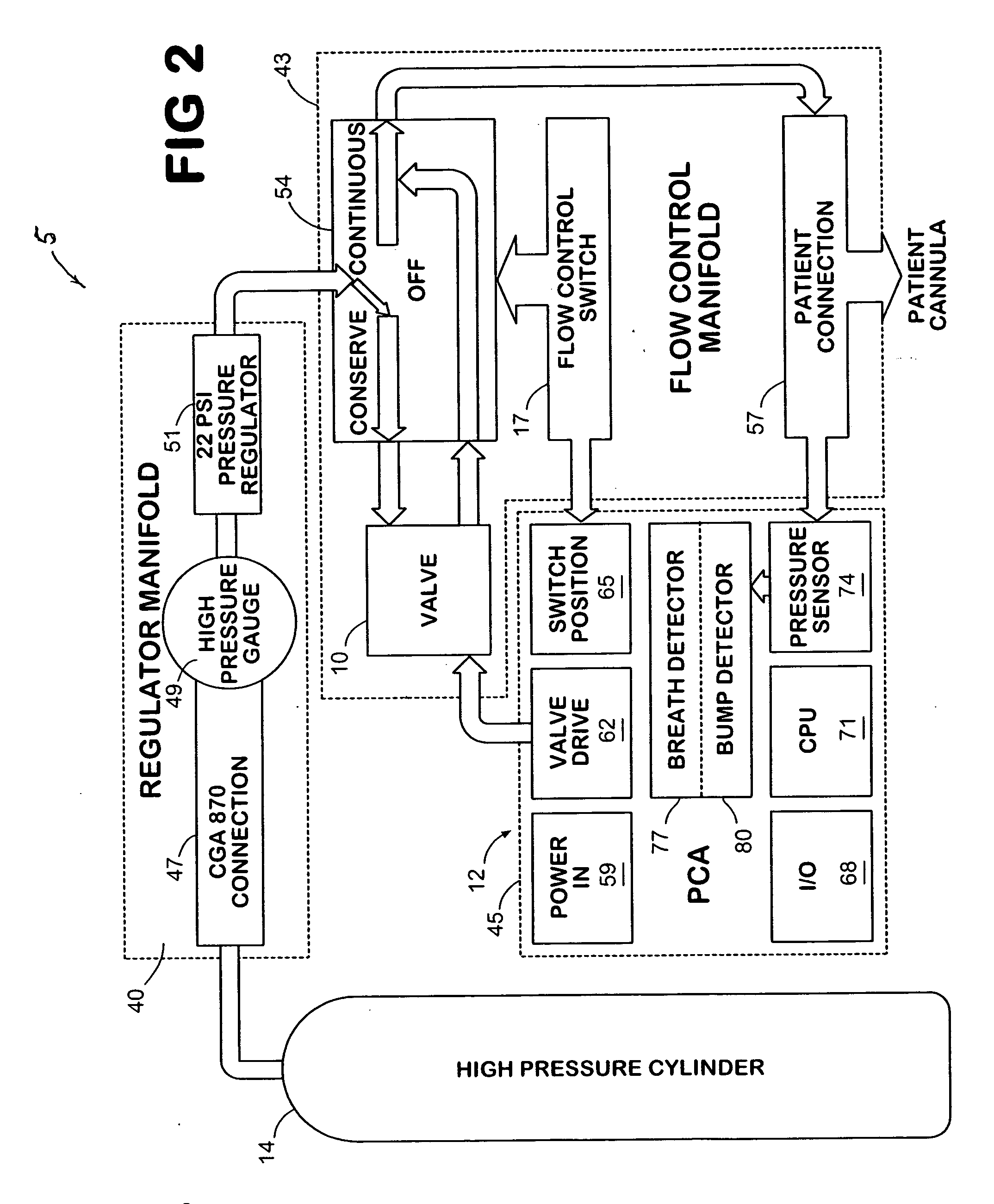Gas conserving device
a gas conserving device and gas technology, applied in the direction of valves, respirators, operating means/releasing devices, etc., can solve the problems of limited oxygen inside the tank, oxygen stored under pressure may create a hazard if the storage vessel, and general ill-suited portability of oxygen concentrators, etc., to overcome the shortcomings of conventional oxygen conservers and reduce power
- Summary
- Abstract
- Description
- Claims
- Application Information
AI Technical Summary
Benefits of technology
Problems solved by technology
Method used
Image
Examples
Embodiment Construction
[0023] Referring now to the drawings, in which like numerals represent like components or steps throughout the several views, FIG. 1 illustrates an electronic oxygen conserving device 5 according to an embodiment of the present invention. Electronic oxygen conserving device 5 is for an individual to use in combination with an oxygen storage container 14 and includes an oxygen conserving controller 12 and an oxygen regulating valve 10. In operation, oxygen storage container 14 provides oxygen to oxygen conserving controller 12, which includes a plurality of oxygen flow settings, e.g., a continuous oxygen flow setting and a conserving (pulse) oxygen flow setting. When oxygen conserving controller 12 is set to the conserving (pulse) oxygen flow setting, the flow of oxygen is provided from oxygen conserving controller 12 to oxygen regulating valve 10 and, subsequently, to a nasal cannula 21. It is to be understood that any conventional oxygen delivery patient interface, such as a mask, ...
PUM
 Login to View More
Login to View More Abstract
Description
Claims
Application Information
 Login to View More
Login to View More - R&D
- Intellectual Property
- Life Sciences
- Materials
- Tech Scout
- Unparalleled Data Quality
- Higher Quality Content
- 60% Fewer Hallucinations
Browse by: Latest US Patents, China's latest patents, Technical Efficacy Thesaurus, Application Domain, Technology Topic, Popular Technical Reports.
© 2025 PatSnap. All rights reserved.Legal|Privacy policy|Modern Slavery Act Transparency Statement|Sitemap|About US| Contact US: help@patsnap.com



